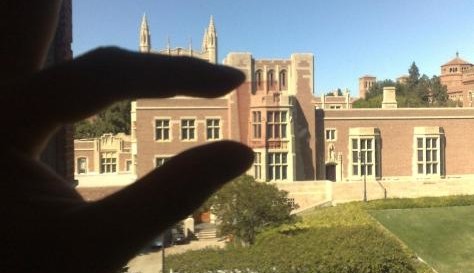Phone LCDs charge ... phone batteries!
on

Photovoltaic polarizers enable devices to be powered by sunlight
New technology developed by researchers at the UCLA Henry Samueli School of Engineering and Applied Science could finally help solve the problem of smartphones or laptops running down when there is no access to an electrical outlet.
UCLA engineers have created a novel concept for harvesting and recycling energy for electronic devices — one that involves equipping these devices' LCD screens with built-in photovoltaic polarizers, allowing them to convert ambient light, sunlight and their own backlight into electricity.
LCDs, or liquid crystal displays, are used in many of today's electronic devices, including smartphones, TV screens, computer monitors, laptops and tablet computers. They work by using two polarized sheets that let only a certain amount of a device's backlight pass through. Tiny liquid crystal molecules are sandwiched between the two polarizers, and these crystals can be switched by tiny transistors to act as light valves. Manipulating each light valve, or pixel, lets a certain amount of the backlight escape; millions of pixels are combined to create images on LCDs.
The UCLA Engineering team created a new type of energy-harvesting polarizer for LCDs called a polarizing organic photovoltaic, which can potentially boost the function of an LCD by working simultaneously as a polarizer, a photovoltaic device and an ambient light or sunlight photovoltaic panel.
Their research findings are currently available in the online edition of the journal Advanced Materials and will be published in a forthcoming print issue of the journal.
From the point of view of energy use, current LCD polarizers are inefficient, the researchers said. A device's backlight can consume 80 to 90 percent of the device's power. But as much as 75 percent of the light generated is lost through the polarizers. A polarizing organic photovoltaic LCD could recover much of that unused energy.
The research was supported by
Source: Matthew Chin and Wileen Wong Kromhout for UCLA Newsroom


Discussion (0 comments)